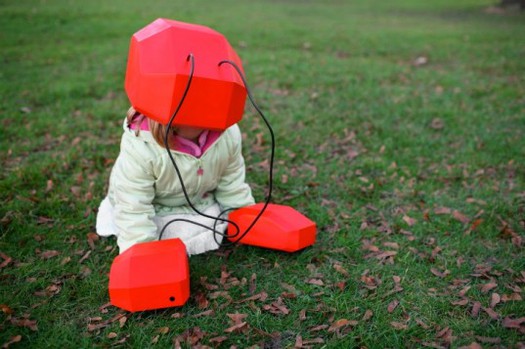
There's a lot of cool stuff in MoMA's new design exhibition, Talk to Me, though two days after visiting I'm hard pressed to remember anything in particular that stands out. The premise of the show, curated by Paola Antonelli, is that objects are now interactive — that they "talk" to us — and that this fact is reshaping the way we relate to them, to the world around us, and to each other. It's a compelling conceit, and Antonelli has an acute sensitivity to design trends — she seems to know everyone and everything that's happening at a given moment. While that generally works to her advantage, here I found the result to be a somewhat bewildering profusion of objects. I did note a large proportion of visitors were in their 20s and 30s; it's definitely a show that speaks to a generation weaned on the digital.
For a show about interactivity, I thought it could have been more interactive, though it certainly makes a good-faith effort in that direction. (If you have a QR reader on your handheld, it will definitely improve your experience.) There are a lot of "Do Not Touch" signs and items behind plexiglass — always a challenge when exhibiting design, and magnified here with the tech theme. A large number of the projects demand that you stare at a screen, passively, or put on isolating headphones. Almost everything requires that you read wall text to understand what's going on.
I thought Antonelli's terrific Design and the Elastic Mind show of a few years ago was more successful at engaging the visitor. That exhibition had several bravura installations, whereas there's really no statement or "wow" project here that pulls you in and commands your attention. I kept thinking that something visually arresting like Mark Hansen and Ben Rubin's Listening Post could really have transformed the experience of the show. (Rubin does have a piece in the exhibition.) It would have been nice as well for there to be some historical contextualization. The long introductory corridor at the opening of the show would have been well suited for some kind of illustrated backstory. (A picture of Kitt from Knight Rider?) Instead there is a series of video projects that, however interesting, delays one from getting into the gallery proper.
For all these cavils, it is still a show that warrants a visit or two. I'm not sure how coherently it speaks as a whole, but there are many individual voices worth hearing. The bit-streamy exhibition graphics are terrific.
PS: While you're there, don't miss 194X — 9/11: American Architects and the City, about which more later.
